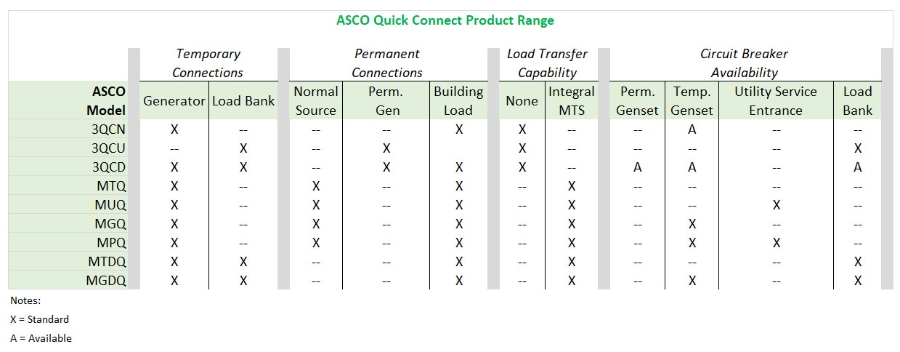Load Testing
A best practice is to regularly test backup power sources under load. Regular performance testing verifies that a backup power system is ready to supply adequate power when an outage occurs on the primary source. Again, regulated mission-critical facilities may be required to do so by codes such as the
National Electrical Code® and NFPA 110 – Standard for Emergency and Standby Power Systems. For more information regarding NFPA 110, review
Part 1 and
Part 2 of the ASCO white paper entitled NFPA 110 Overview.
When testing backup power systems, some facilities are reluctant to use live building load. In addition, the amount of live load at the time of testing may be a small fraction of the total capacity of the backup power system. Notably, most backup power generators are powered by diesel engines, which typically must operate at a minimum load of 30 percent or more to avoid a condition known as wet stacking. For these reasons, a permanent or temporary load bank is often provided to ensure adequate load for a meaningful test. Providing a quick-connect output panel enables a facility to use a temporary load bank to provide adequate load. This arrangement avoids the larger initial cost of purchasing and installing an equivalent permanent load bank.
Accessing Both Supplemental Power and Supplemental Load
Dual-Purpose Quick Connect Panels feature both input and output panels in one device. These can be used singularly or together to connect power sources and load banks for all of the reasons described above.
How Else Do ASCO QCPs Vary?
Quick Connect Panels also vary by whether they integrate a transfer switch and whether they integrate one or more circuit breakers for the power sources or loads.
Integrated Transfer Switch
If a temporary power source is added to a backup power system, a transfer switch is needed to select between the supplemental genset and the permanent genset. Some applications will benefit from using separate devices, such as an indoor manual transfer switch to transfer load between the permanent and temporary power sources through an outdoor Quick Connect Panel. This arrangement can allow direct control of the transfer switch from an indoor power equipment room and a convenient location alongside a paved area for connecting a temporary generator. Other applications may be well served by using a single, integrated, outdoor unit that combines a manual transfer switch and a quick connect panel in a single enclosure (Figure 2). This solution can reduce the net equipment footprint, installation labor, and the overall cost of the solution.





